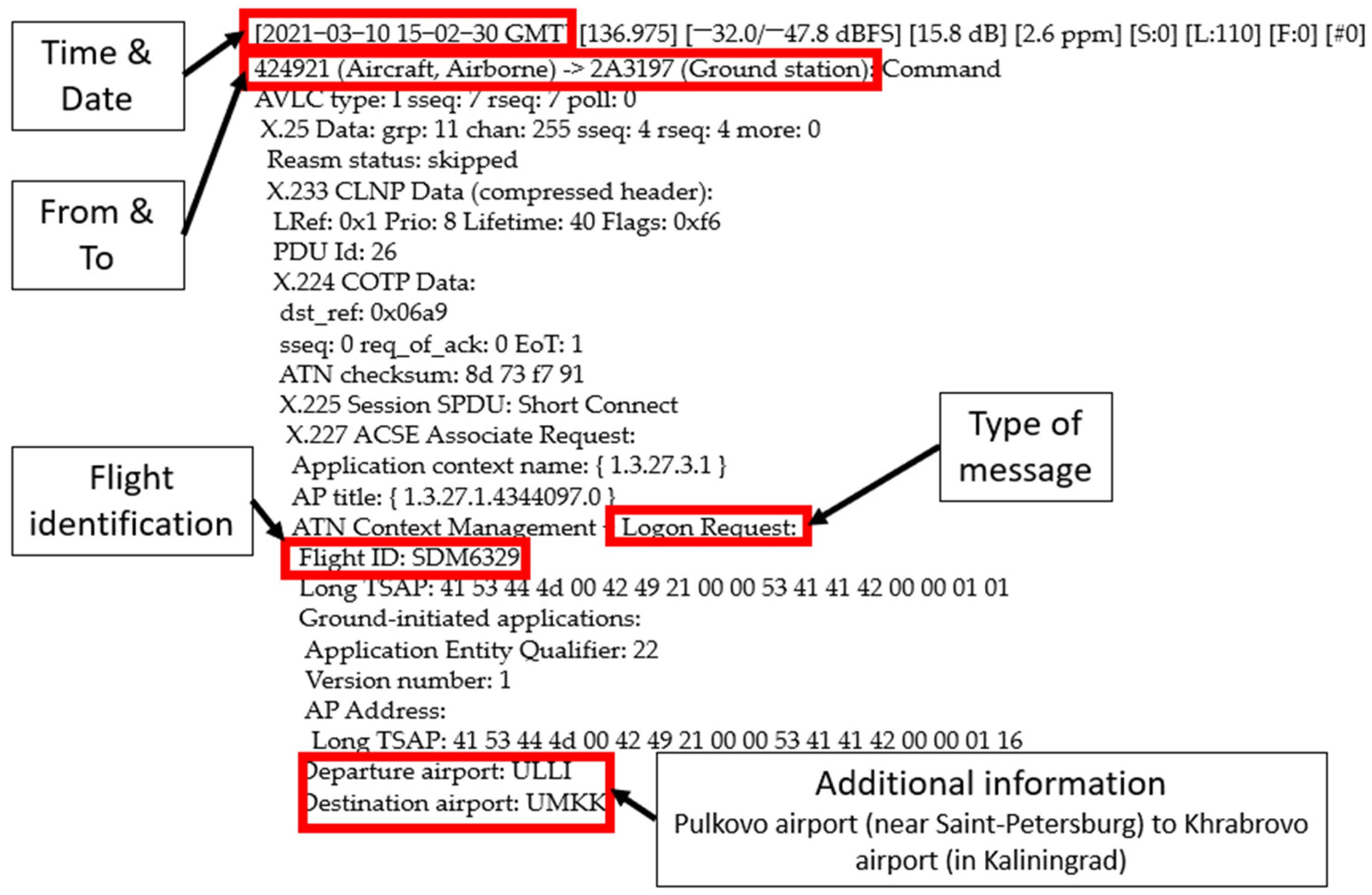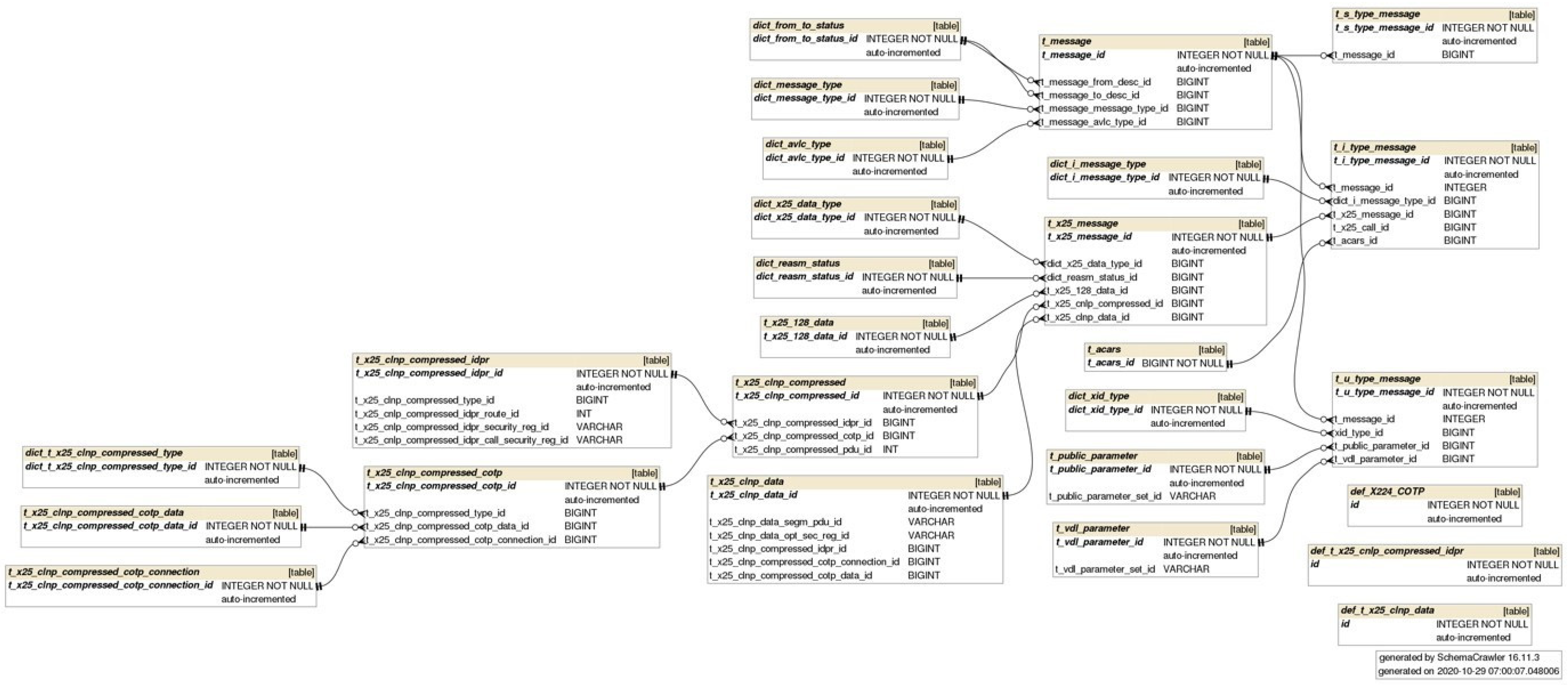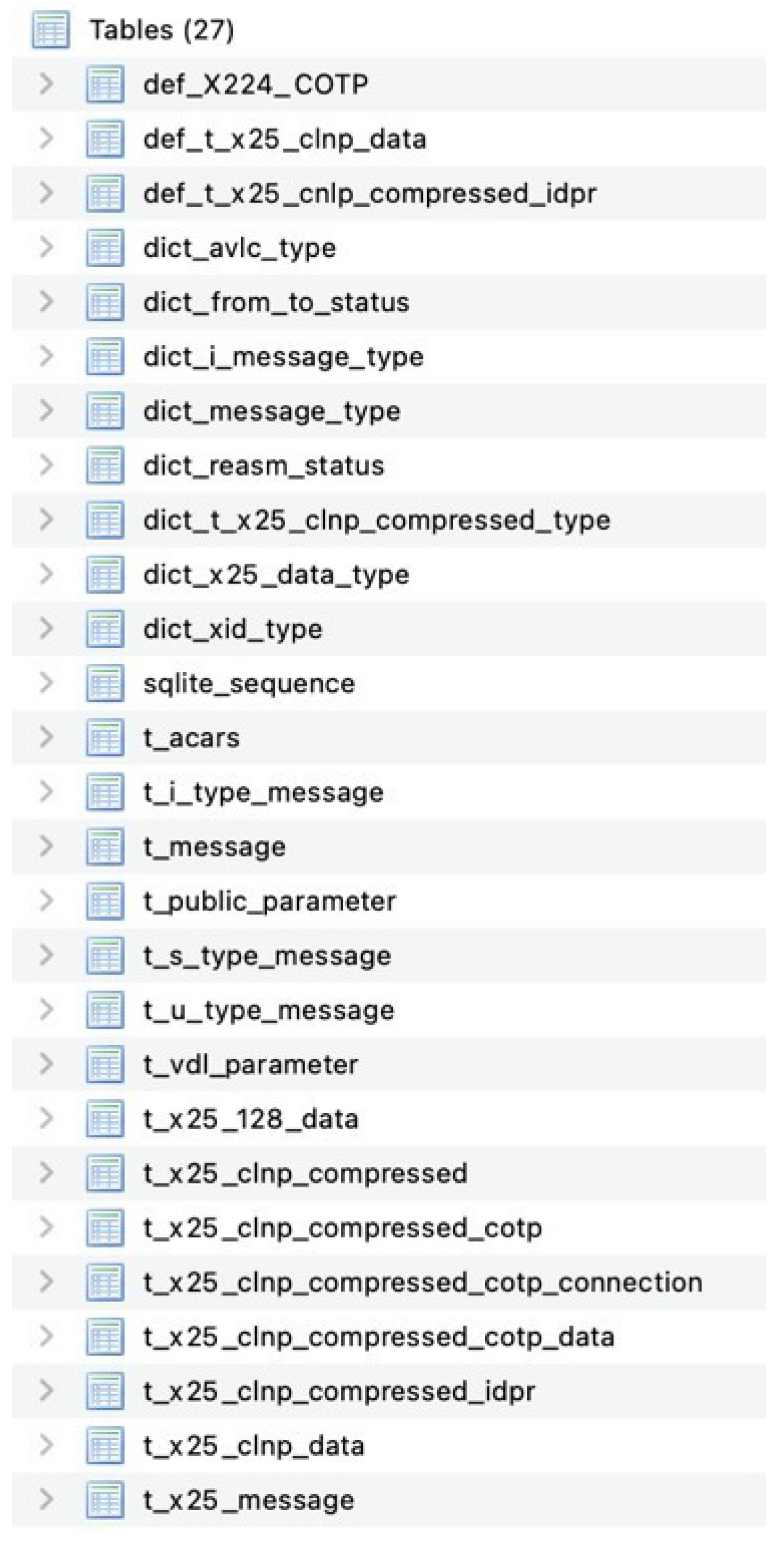Analysing the Actual Use of Controller–Pilot Data Link Communications †
Abstract
:1. Introduction
2. Terminology and Communication Stack Used by CPDLC
3. Methodology
4. Qualitative Analysis
5. Quantitative Analysis
6. Conclusions and Further Work
Author Contributions
Funding
Data Availability Statement
Conflicts of Interest
References
- Lundström, S. Technical Details of VDL Mode 2; Linköping University: Linköping, Sweden, 2016. [Google Scholar]
- Turner, A. CPDLC Coming of Age. Syria Studies. 2022. Available online: https://www.aerospacetechreview.com/cpdlc-coming-of-age/ (accessed on 6 September 2022).
- Eurocontrol. Regular Performance Reports. 2022. Available online: https://ext.eurocontrol.int/WikiLink/index.php/Regular_performance_reports (accessed on 7 September 2022).
- ICAO. Working Draft ‘Global Operational Data Link Document (GOLD)’. 2013. Available online: https://www.icao.int/APAC/Meetings/2013_FIT_Asia2_RASMAG18/4.%20GOLD_Part%201%20[Compatibility%20Mode].pdf (accessed on 6 September 2022).
- Eurocontrol. DPMF vdl2 Monitoring Flight Report. 2018. Available online: https://ext.eurocontrol.int/WikiLink/images/7/72/DPMF_Monitoring_Flight_190806_v1.0_release.pdf (accessed on 6 September 2022).




| OSI Layer | OSI Network Model | VDL-2 & ATN |
|---|---|---|
| Layer 7 | A protocol of a particular application (for example: HTTP) | CPDLC messages |
| Layer 6 bis | X.227: Application control service element | |
| Layer 6 | Is the presentation layer for ccnversion, compression, and encryption (works on ASCII, gif, MPEG) | X.226; Presentation protocol |
| Layer 5 | The session layer used for very specific cases (for example NFS) | X.225: Session protocol |
| Layer 4 | This is the transport layer. Most used are TCP and UDP segments | Connection Oriented Transport Protocol (COPT) |
| Layer 3 | The network layer sends packets. This are mostly IPv4 and IPv6 datagrams | ConnectionLess Network Protocol (CLNP) |
| Layer 2 bis | X.25: packet data circuits | |
| Layer 2 | In the data link layer, there are the media access and logical link control. Those are often ethernet frames | Aviation Layer Link Control (AVLC). This is similar to Higl-level Data Link Control (HDLC) |
| Layer 1 | The physical medium can be wired, such as twisted pair or fibre optic cable or wireless | VDL-2 bursts on radio link level |
| t-messages | 4,743,542 | S-messages | 1,453,787 | ||
| U-messages | 699,016 | Link Establishment Response | 26,258 | ||
| Ground Station Information Frame | 550,650 | ||||
| Handoff Request/Broadcast Handoff | 9431 | ||||
| Handoff Initiation | 59,455 | ||||
| Handoff Initiation | 27,004 | ||||
| Link Establishment | 13,697 | ||||
| Link Connection Refused | 116 | ||||
| Link Connection Refused Response | 247 | ||||
| AVLC type U | 12,158 | ||||
| I-messages | 2,590,739 | X.233 CLNP Data | 1,219,565 | ||
| X.233 CLNP Data | 1,219,565 | IDPR message | 836,049 | IDRP Open | 63,254 | ||
| IDRP Cease | 873 | ||||||
| IDRP Keepalive | 724,895 | ||||||
| IDRP Update | 37,491 | ||||||
| IDRP Error | 35,080 | ||||||
| COTP message | 383,086 | Connection | 46,177 | X.224 COTP Connect Request | 10,245 | ||
| X.224 COTP Connect Confirm | 14,827 | ||||||
| X.224 COTP Disconnect Request | 21,105 | ||||||
| X.224 COTP Data | 47,406 | ||||||
| X.224 COTP Disconnect Confirm | 14,005 | ||||||
| X.244 COTP Data Ack | 138,160 | ||||||
| X.224 COTP Data Ack (extended) | 105,931 | ||||||
| X.224 COTP Data (extended) | 31,407 | ||||||
| NO COTP and NO IDPR message | 430 | ||||||
| CPDLC Downlink | 13,376 | X.227: ACSE Release Response | 8591 |
| Current Data Authority | 3479 | ||
| Logical Acknowledgment | 4965 | ||
| WILCO | 4626 | ||
| Free Text | 74 | ||
| Remaining | 225 | ||
| CPDLC Uplink | 48,062 | X.227: ACSE Release Request | 8691 |
| Logical Acknowledgment | 17,273 | ||
| Free Text | 9991 | ||
| Next Data Authority | 5717 | ||
| SQUAWK | 2364 | ||
| Contact | 1221 | ||
| Proceed | 1534 | ||
| Climb | 664 | ||
| Descend | 426 | ||
| Unable | 121 | ||
| Standby | 79 | ||
| Heading | 17 | ||
| Maintain | 10 | ||
| Service Unavailable | 4 |
Disclaimer/Publisher’s Note: The statements, opinions and data contained in all publications are solely those of the individual author(s) and contributor(s) and not of MDPI and/or the editor(s). MDPI and/or the editor(s) disclaim responsibility for any injury to people or property resulting from any ideas, methods, instructions or products referred to in the content. |
© 2023 by the authors. Licensee MDPI, Basel, Switzerland. This article is an open access article distributed under the terms and conditions of the Creative Commons Attribution (CC BY) license (https://creativecommons.org/licenses/by/4.0/).
Share and Cite
Orye, E.; Visky, G.; Maennel, O. Analysing the Actual Use of Controller–Pilot Data Link Communications. Eng. Proc. 2022, 28, 18. https://doi.org/10.3390/engproc2022028018
Orye E, Visky G, Maennel O. Analysing the Actual Use of Controller–Pilot Data Link Communications. Engineering Proceedings. 2022; 28(1):18. https://doi.org/10.3390/engproc2022028018
Chicago/Turabian StyleOrye, Erwin, Gabor Visky, and Olaf Maennel. 2022. "Analysing the Actual Use of Controller–Pilot Data Link Communications" Engineering Proceedings 28, no. 1: 18. https://doi.org/10.3390/engproc2022028018
APA StyleOrye, E., Visky, G., & Maennel, O. (2022). Analysing the Actual Use of Controller–Pilot Data Link Communications. Engineering Proceedings, 28(1), 18. https://doi.org/10.3390/engproc2022028018






